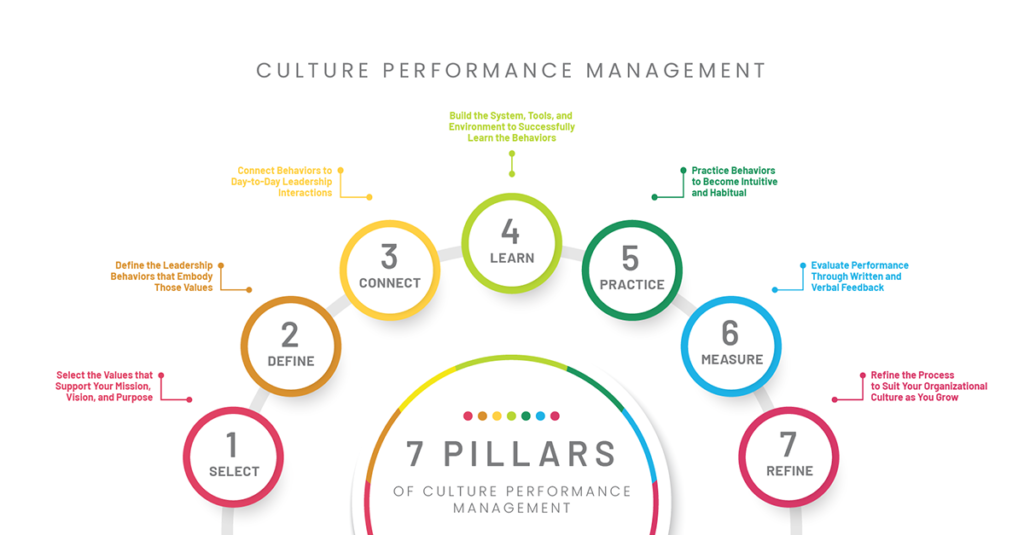
Many organizations don’t have a system in place to have productive conversations between their various departments. This oversight can produce impenetrable barriers, often called “the silo effect,” and can devastate productivity and stifle innovation.
Good communication is an essential quality of any successful organization. How your executive leadership communicates with management and how the management team relays information to frontline supervisors and workers significantly impacts overall productivity and growth. Conversely, poor communication can wall off entire departments, facilities, and tiers within an organization over the years, bricking them in a little at a time.
Unfortunately, many organizations don’t focus on improving communication, especially regarding cross-departmental collaboration, training, and development. Queens University of Charlotte found that 75% of employers rate teamwork and collaboration as “very important,” but only 18% of employees get communication evaluations in their performance reviews. It can be challenging to ensure that all departments communicate effectively, especially when a company is growing rapidly, understaffed, or dialed up trying to meet marketplace demand.
According to a recent study by The Economist, poor communication has a tremendous impact on the workplace. Unclear instructions from superiors, pointless meetings, and other stressors can snowball into more significant issues with widespread effects on the business. For example, respondents to the survey said communication barriers are leading to a delay or failure to complete projects (44%), low morale (31%), missed performance goals (25%), and even lost sales (18%). All of these issues, of course, lead to high turnover and trouble attracting new employees.
When there is a communication breakdown, it is often between departments. Often, different departments within an organization don’t have a system in place that allows them to have productive conversations with other departments. One had, as they say, has no idea what the other was doing. As a result, sales may make customer delivery promises and fail to communicate with operations, and so on.
This phenomenon is referred to as “the silo effect.” A silo may develop due to physical spaces or managerial differences, among other things. Patrick Lencioni defines silos as “nothing more than the barriers that exist between departments within an organization, causing people who are supposed to be on the same team to work against one another.” Silos exist between management and workers, from plant to plant, across skills and technical knowledge divides, even generationally. No matter the source, silos flourish due to a poorly implemented operational culture.
Why Do Silos Develop?
Department leaders may tend to point the finger at the individual employees within their departments, but a silo often begins at the top. Silos can result from department leaders not communicating with or collaborating. They can also stem from a fear-based culture or inefficient processes. Finally, they demonstrate a lack of trust.
Ultimately, though, a silo happens when there is a lack of leadership. It occurs whenever employees develop loyalty to one specific department rather than to the organization as a whole. They may also happen when there are differences of opinion in management or priorities. Not working from the same page with the same goals in mind divides people at all levels.
There may also be ill will due to long-standing relationships within the organization. Negativity among co-workers can have a significant impact on productivity. Whether between team members, managers, or employees, negativity and disrespect in the workplace can lead to a toxic environment affecting your bottom line.
How to Improve Communication
So how do you go about improving cross-departmental communication? Here are a few tips.
1. Establish processes and behaviors that encourage collaboration
Excellent communication and collaboration are a result of a positive employee experience and overall workplace culture. And it begins at the top with clearly-stated expecations and leadership. So without a robust and cohesive mission, without a culture of respect, it’s impossible to facilitate a collaborative work environment.
It needs to be entirely clear what each department is supposed to accomplish, so everyone is headed in the same direction. Department leaders need to establish clear guidelines for the employees under them. Unclear expectations can undermine the entire organization you’re trying to build.
Know the strengths of each frontline leader, every team member, and trust each other. Focusing on building a high-trust environment is critical. A study by the Harvard Business Review found that employees in high-trust organizations reported 74% less stress, 76% more engagement, and 50% more productivity.
2. Follow up on commitments
Once you have established clear guidelines for communication and collaboration, you need to hold each other accountable. Throughout the day, have check-ins between departments where you can follow up on the status of issues. Be consistent with these check-ins and create an environment where staff members feel they can be open and honest with their leaders and colleagues.
Creating an environment where departments can hold each other accountable will do wonders for your productivity. The American Society of Training and Development did a study on accountability, and found that if someone has a specific meeting with someone they’ve committed to, they have a 95% chance of success.
3. Bring leaders from different departments in for strategy sessions
For example, bringing the maintenance manager into a production strategy session is an excellent idea and pays immediate dividends. Leaders in other departments can bring valuable insights to the strategy and goals within your department. It’s vital to encourage leads within each area, not just at a leadership level but at a frontline level.
Be mindful during strategy meetings and let the leaders from other departments know that their thoughts and ideas have merit. Make sure you are taking the time to really listen to each other. Don’t assume you have the best ideas about running your department; a leader from another department may have a different approach that may help things run more efficiently.
The POWERS Difference
A healthy and thriving culture is the key to building effective communication and cross-departmental collaboration in the workplace. At POWERS, our proven Culture Performance Management™ (CPM) methodology connects the dots between optimized company culture and desired operational performance outcomes. It can help break down silos, and open lines of effective communication, collaboration, and innovation.
Our team has helped executive leadership across many industries implement CPM to operationalize their culture for rapid and sustained performance improvement, increased competitive advantage, greater value, and a stronger bottom line.
To put our experienced team and proven track record to work for you, schedule an initial discovery and analysis by calling +1 678-971-4711, or emailing us at info@thepowerscompany.com.
Read Our 3-Part Series on Culture Performance Management
Culture Performance Management Helps Solve Organizational Challenges at the Root Level: Leadership
Culture Performance Management Helps Solve Organizational Challenges at the Root Level: Leadership Culture Performance Management gives you the ability to ...
Create a Continuous Improvement Cycle for Your Company Culture with the 7 Pillars of Culture Performance Management
CPM is built on seven essential elements, or pillars, that act like a building’s foundation. These seven pillars, when implemented ...
Culture Performance Management Gives You the Tools to Build and Sustain a Company Culture of Continuous Improvement
Culture Performance Management is the way to take control of your company culture in a purposeful, positive, and definitive manner. ...




